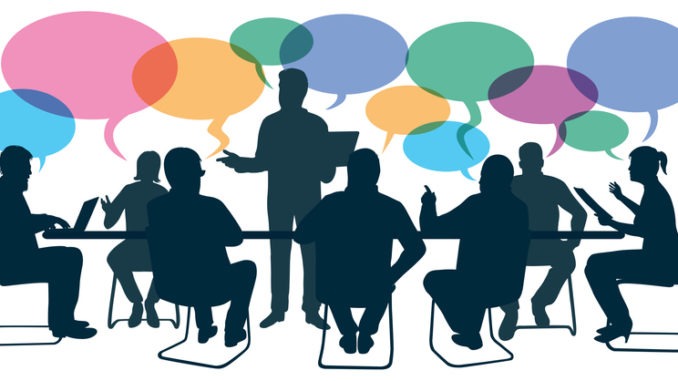
Effective communication skills at work are the key to forming relationships and solving problems. Kaitlin King explains how to get it right
CREDIT: This is an edited version of an article that originally appeared on Career Contessa
It was a tiring day at work. I was sitting (well, slumping) at a desk, tip-tapping away at an email, bemoaning my misfortune. “How am I involved in call, upon meeting, upon chat, upon thread, and yet still need to repeat all of my efforts and re-write the same information in a email?!” I quickly bullet-pointed the summary items and hit ‘send’, frustrated.
Sound familiar?
This had become the reality of my interactions. I was failing because of ineffective communication skills and a misaligned mindset. I didn’t recognise the power behind my day-to-day actions, and I didn’t realise how I could leverage the things I bemoaned to actually make my life better.
My ‘A-ha’ moment, and subsequent transformation, started by focusing on a simple, yet powerful, reality – that every interaction with another person represents an opportunity—an opportunity to inspire change and impart confidence in your audience.
There are rarely net neutral human exchanges – not in the line for coffee, not in an email, and definitely not in the boardroom. As we rush through our days, trying to get our inbox to single digits, it seems like our only option is to hustle endlessly to make the numbers. Our lives are filled with goal-driven conversations – but we often complicate these by misidentifying the goal and, consequently, wasting important opportunities to communicate well.
Here are three ways to make the most of our connections and improve communication skills at work. Trust me, they will make every day at work more effective.
As Franklin Covey would say, ‘Begin with the end in mind’
A fundamental objective of all conversations is to reaffirm the relationship and the value you bring to it. Through redefining our day-to-day success, we remember that the goal of most communication is to solve problems; this is, after all, why organisations exist in the first place. The purpose of most of my emails, I realised, wasn’t necessarily to incite more replies, but to influence those copied in to take action – and action would get me the results I was aiming for all along.
Highlight your insight above information and data
Give your reader clarity and understanding from your distinctive perspective. Show why you are an integral part of the solution to their problems, and why following your recommendations will make their lives easier. When you establish yourself as a problem-solver you increase your value to your colleagues, and they will react to you better. Instead of just mentioning facts and figures, tell your customers what those numbers mean for their business, project or objective, and what they can do to make the best impact.
Anticipate questions and seamlessly weave them in before they even need to ask
When we feel understood, we start trusting, and trust is the first step to a solid relationship. Consider your audience’s perspective and give them all of the information they will need or want up front in your communication.
My days of trudging through my email are over, and guess what? I receive about 20% fewer in my inbox per day, because the follow-up correspondences are not filled with doubt, clarifying questions, and the infamous ‘I’ll get back with you later’. Now, the responses I get, more often than not, are confident and action-taking.
Think about the very next email you are going to write. What, specifically, are you looking to accomplish? How can you positively affect those involved and inspire them to act?


Be the first to comment